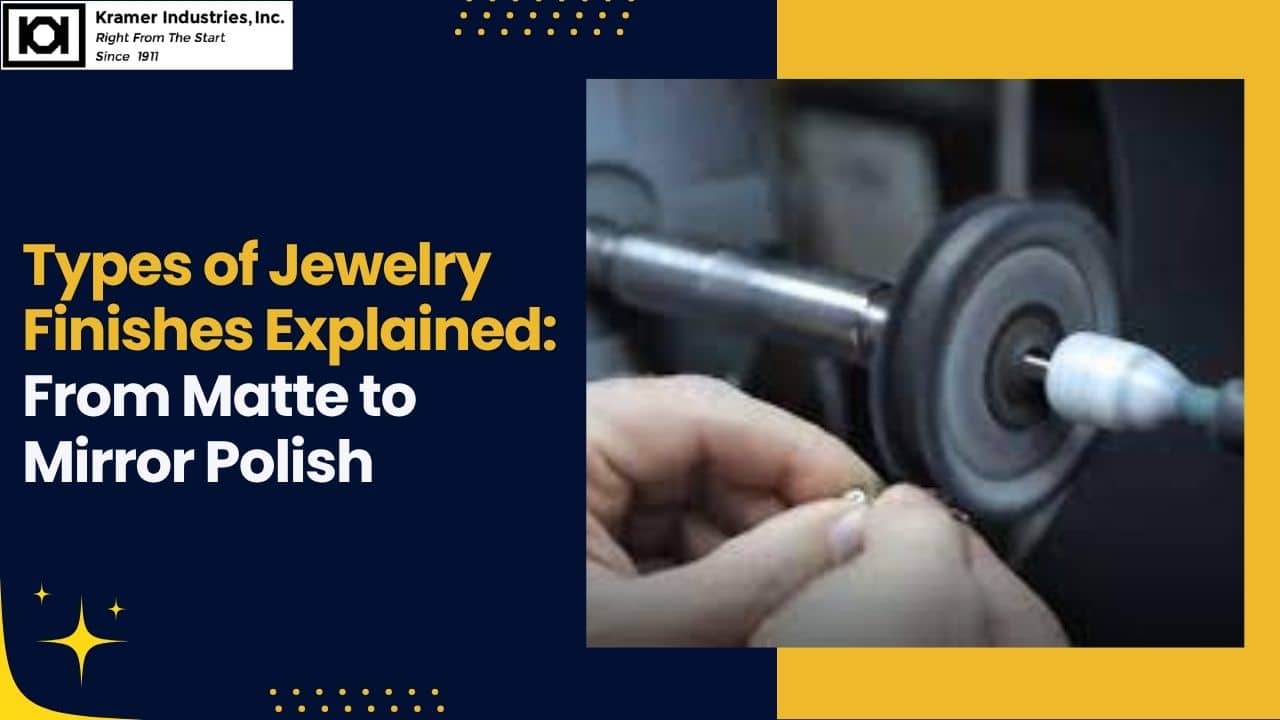When a piece of jewelry moves from rough casting to its final form, the surface treatment defines its personality. The type of finish determines not only how a piece looks but also how it wears, feels, and reflects light. Understanding the range of jewelry finishes helps designers make smarter creative choices and allows clients to select pieces that fit their taste and lifestyle.
From the brilliance of a mirror polish to the subtle charm of a matte surface, every finish adds a unique touch that sets a design apart.
The Importance of Jewelry Finishes
In jewelry making, finishes are more than decoration-they’re performance features. They influence durability, appearance, and maintenance. By mastering jewelry finishes, you can offer clients designs that look refined, function well over time, and express individuality. A single finish can turn a simple design into something striking and unforgettable.
High Polished Finish
The high polish is the most classic of all jewelry finishes. It delivers a mirror-like shine that screams luxury and refinement. This finish reflects light beautifully, amplifying gemstones and metal tones alike. It’s ideal for engagement rings, statement pieces, and fine accessories that demand attention.
The trade-off is upkeep: polished surfaces show scratches and fingerprints easily. Regular cleaning and careful handling are necessary to keep that flawless mirror look. Still, for clients seeking brilliance and elegance, a polished finish remains the ultimate choice.
Matte Finish
At the opposite end of the spectrum lies the matte finish-a soft, light-diffusing treatment that gives jewelry a modern, understated elegance. This type of surface reduces reflection, making scratches less noticeable and maintenance simpler. It’s a great choice for everyday wear or minimalist styles.
While matte jewelry finishes offer subtle beauty, they can mute gemstone sparkle or metallic gleam. Yet, many customers prefer this contemporary aesthetic for its relaxed, timeless appeal.
Hammered Finish
The hammered finish introduces texture and individuality. Created by striking the metal with small, rounded tools, it results in gentle indentations that play with light in organic ways. Each piece becomes unique, with a handcrafted appearance that feels authentic and artistic.
This finish suits artisanal or nature-inspired jewelry collections. However, the irregular texture may not appeal to everyone, and achieving a consistent hammered pattern requires skill and time.
Stipple Finish
The stipple finish uses fine dot-like markings to create subtle texture. Less common than the hammered look, it brings a touch of whimsy and fine detail to a piece. It works well when you want a tactile surface without overwhelming the design.
Designers who experiment with stippled jewelry finishes often discover a fresh, creative dimension-but should note that some metals may not take this effect evenly.
Satin and Brushed Finishes
Satin and brushed jewelry finishes strike a perfect middle ground between shine and texture. Brushed finishes use fine parallel lines to create direction and movement, while satin finishes produce a uniform, velvety sheen.
Both are highly practical-they mask minor wear, maintain a tactile appeal, and complement minimalist or masculine designs. Though they lack the sparkle of high polish, they offer warmth and sophistication ideal for modern jewelry aesthetics.
Sandblasted Finish
A sandblasted finish uses fine abrasive media to gently roughen the surface, giving it a frosted, grainy texture. The result is a smooth yet non-reflective appearance that feels contemporary and industrial. These jewelry finishes are durable and forgiving of everyday wear, making them popular for casual or unisex designs.
The trade-off is that detailed engravings or intricate features may appear softer after sandblasting, and cleaning requires care to preserve the surface consistency.
Other Unique Jewelry Finishes
Beyond these core categories, there are countless creative options. Stone-tumbled finishes use natural friction for organic texture, while Florentine finishes apply cross-hatched lines for visual depth. Antiqued finishes introduce darker tones through oxidation or heat, giving pieces a vintage or aged character.
For color accents, enameling combines powdered glass or resin for vivid contrast and artistic flair. The world of jewelry finishes is vast, allowing endless combinations to match mood, design intent, and material.
Choosing the Right Finish
For designers and jewelers, selecting the correct finish is about aligning form, function, and emotion. Different jewelry finishes offer distinct advantages in durability, maintenance, and aesthetic impact. Understanding how each behaves helps you tailor your creations to customer preferences, balancing longevity with design expression.
When you choose the right finish, you’re not just deciding how something looks-you’re determining how it endures and how clients experience quality over time.
Elevate Your Craft with Kramer Industries
Whether you’re polishing fine jewelry, texturing custom pieces, or experimenting with new surface effects, Kramer Industries offers the tools and abrasives to help you perfect your craft. Our precision media and finishing systems make it easy to achieve consistent, professional-quality jewelry finishes across metals and designs.
Explore Kramer Industries’ full line of jewelry finishing solutions today and discover how the right surface treatment can make your creations shine-literally and figuratively.



